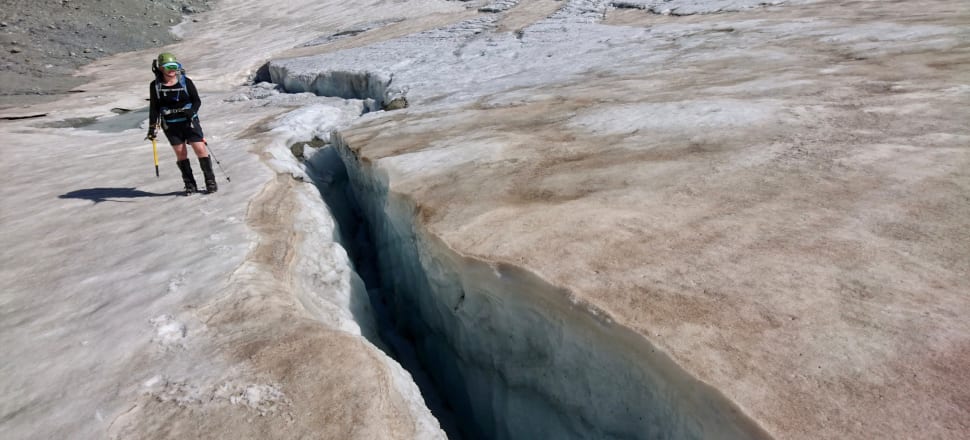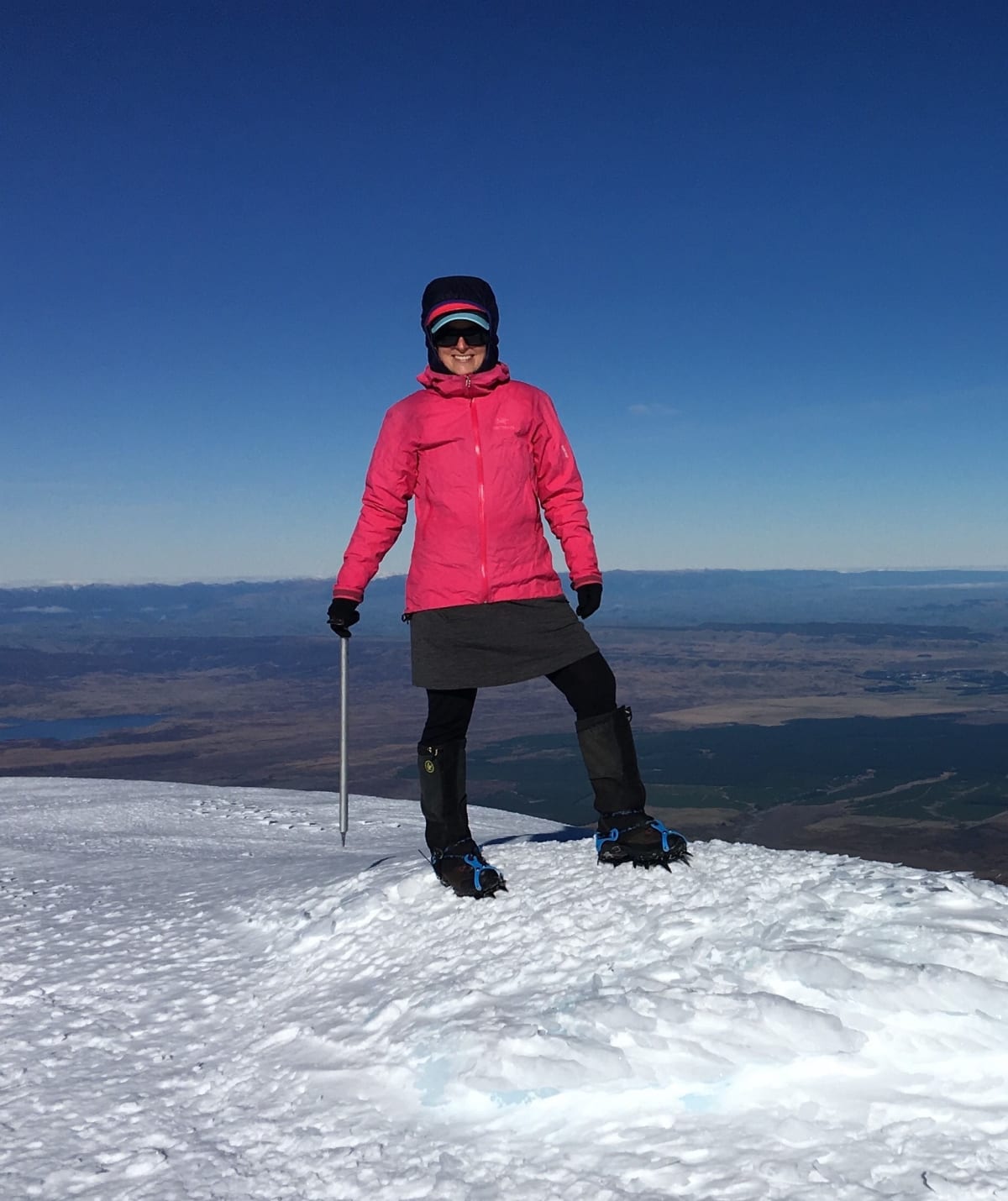
The story of an overweight climber
I began solo tramping after my friend David told me I couldn’t do it. I’d been organising group tramping trips nearly every weekend and I usually carried more than my fair share of gear, figured out the route, and did the meal plans and the cooking. But there were trips I wanted to do — typically longer ones — and I couldn’t find buddies who were on the same crazy page as me. Eventually it occurred to me that I’d be doing the same amount of planning, organising and carrying if I went solo. The only difference would be that I was, well, by myself.
"You couldn’t do it," David told me when I expressed my ambition to do the Ruapehu Round the Mountain Track by myself. ‘There’s no way you could carry all your own gear and food and make it around the track. No way.’ I was overweight at the time, tipping into obesity by nightfall most days, and had low confidence in my own abilities, so this was a further blow.
I went anyway, figuring that slow and steady wins the race, even if the turtle weighs too much. I planned for six days, five nights, with the intention of stopping at most of the huts on the track. I did it in three nights. A few years later I told David I had started solo tramping because of his comment and he strenuously denied ever saying it. Maybe I seemed more competent by that point.
There were other people on the track and at all the huts. Then I soloed the Abel Tasman track; as a Great Walk it’s popular and populated, and there were people everywhere there, too. Easy stuff. Then I tackled the next frontier: spending the night in a hut completely by myself. Oooooh, spooky! I had a South Island tramping bender coming up, with a month off work in between jobs, and I wanted to get over any fear of being alone in a backcountry hut before I went on that trip.
I chose Blyth Hut, which I’d done day trips to before. I have a great affinity with Blyth Hut — it’s nestled just on the bushline at 1400 metres on the southern side of Ruapehu, it gets minimal traffic as it’s a 30-minute detour off the Round the Mountain Track, and it’s about five minutes’ walk from a small, clear swimming hole that’s often rather warm in summer as the snowmelt flows over hot rocks as it cascades down the hill. Another bonus: if you choose the right bunk, you not only get a view to Girdlestone (Peretini) peak on Ruapehu but also you get the sunrise for coffee in bed in the morning and to gaze at the stars at night, through a large window on the eastern side.
I freaked myself out a bit being alone in the dark with just a fading headtorch for company on my final jaunt to the longdrop before bed. But otherwise, being alone was quiet and soothing. I fell in love with Blyth Hut that trip. I’m still in love with it — I think we’re looking at a lifelong affair.
I was still held back by my weight. I watched others around me, particularly rock climbers, carefully maintain their leanness through strict nutrition while I ate haphazardly and suffered the effects. When you’ve been told you’re overweight all your life it’s hard to adjust. Hard to see yourself as a thin person, or a potentially thin person in my case. Hard to imagine that achieving a state of ‘not-fat’ would ever be possible.
Determined to shed some weight for an upcoming trip, I began a high-intensity interval training programme and a month committed to whole foods and no alcohol or coffee while staying with my brother, north of Auckland. Dad had recently gone into a nursing home with Lewy body dementia (a form of dementia that attacks muscle function and creates confusion in the mind) and we were in limbo, convinced most days he was going to fall off his perch. Outdoor adventures were off the cards while we dealt with the stress of our beloved father in decline.

We visited every day — my gig was to feed him breakfast, straight after my morning training session and green smoothie (frozen mango, low-cal almond milk, ginger, spinach). Dad frequently asked after the euthanasia Bill — was it legal yet, and if so, could we bump him off please — and would that fucking bastard David Seymour pull his finger out and make it happen.20 Sometimes he’d tell me he’d been attempting to die (this consisted of him closing his eyes for a few minutes and really concentrating on it, trying to propel himself into the afterlife, and unsurprisingly it never worked).
I felt like I was at least making the most of my time by trying to get my health sorted, even if I was stuck in one place and not getting out much. Eventually I realised I needed to move on with my life and I packed and headed south again, stopping for a soothing overnight at Blyth Hut with a soak in the pools. I hit Arthur’s Pass a couple of days after leaving Auckland and Dad took a turn for the worse. Once more, we became convinced he would die, but once more, he inexplicably held on.
We’ve all had that one friend who’s a relentless cake pusher: "Just have a slice, it won’t kill you"; "You’ve gone too far, you’re too thin"
After a few months in the South Island, I flew north again for the winter. I’d dropped a couple of kilos thanks to continuing with the training programme and frequent tramping, but still wasn’t hitting my goals. A BMI of 20 felt impossible. It was May; too early for winter climbing and skiing, but the days were still too short for long tramping trips. I holed up in a lodge on Ruapehu, did some work, continued training every day, and ate only salads, fruit and green juices. That strips the weight off, by the way, but your taste buds won’t be delighted with the regime. You can also only do this sort of strict consumption if you’re either alone and determined or surrounded by people who are willing to hop on the health wagon and support you. We’ve all had that one friend who’s a relentless cake pusher: "Just have a slice, it won’t kill you"; "You’ve gone too far, you’re too thin".
I’d managed to whittle myself down from my former 78 (or so) kilograms to hover around the 70-kilogram mark, thanks to keeping on the salads and keeping off the pies.
*
I took off for a long tramp by myself, buoyed by my incremental successes on shorter trips. It now felt quite natural to spend the night by myself in a hut, or even several nights. I felt bullish and mapped out a 10-day excursion. I would tramp from St Arnaud to Hanmer Springs: up the Travers River and over Travers Saddle; via the Blue Lake and Lake Constance; over Waiau Pass (it looked prodigiously steep on the topo map; I was worried); down the Waiau River; Lake Guyon and the Stanley River (about which I could only find scanty intel — it looked like there was a track, on the map, at least); rejoin the Waiau River; Charlies Saddle and the Edwards River; Peters Pass to St James Homestead; and finally, a gravel road-bash on the Tophouse Road and over Mount Isobel to triumph at Hanmer Springs.
It turns out 10 days’ worth of food is heavy enough to give you blisters where your pack rubs on your skin, but I only found this out at the end of day one when it was too late and I was disinclined to turn around. That 10 days’ worth of food was predicated on a lean 1600 calories each day. I ate a sachet of oats for breakfast with a teaspoon of black instant coffee and one sweetener tablet; crackers with cheese or peanut butter for lunch, carefully rationed; one small muesli bar and three jet planes each day; one line of chocolate from a family-sized block; and instant noodles with two tablespoons of dehydrated vegetables for dinner.
By day five my pants were feeling looser from the caloric burn of walking all day (over alpine passes and up hills, most days). I sliced up my two spare ‘emergency’ hair ties and used them to elasticate my shorts because they started falling down. I seemed to get fitter and fitter, and my 10-day tramp became nine days. I popped out of the woods and into the urban delights of Hanmer Springs after ignoring a forestry contracting sign that warned me not to continue. (They were right — the tracks had been bulldozed and it took me twice as long.)
People stared at me in Hanmer Springs. I assumed it was because I was visibly filthy and obviously smelly, at least until I got to my accommodation for the night and accessed a shower, or because my pants were falling off. Or perhaps they didn’t so much stare as I was just not used to unknown men making eye contact. They tend to react differently to you when you’re thin. When you’re fat they sweep a gaze up your body from your feet, but drop the gaze again once they get to your fat bits. If the gaze actually makes it to your eyes, you’re enough. You’re good enough, thin enough, to warrant eye contact. Maybe even a smile or a hello. (I have particularly attractive female friends who I’ve seen get chased down the street.) Fat, they say, is a feminist issue. And the truth will set you free, says Gloria Steinem, but first it will piss you off.
So I got eye contact, thanks to nine days in the wilderness on 1600 calories a day. I hadn’t done it for weight loss but rather to decrease the weight in my pack on a trip where scenery and challenge, not haute cuisine, were the objectives. I did it for myself — not for attention. And even though I’d spent 10 days alone, I wasn’t particularly interested in having company.
It’s a sharp about-face, though, for a woman who left St Arnaud 10 days prior with several extra kilograms on her face and frame. At one point a man smiled at me and said "G’day" and I turned around — I actually turned around — to see if he was talking to someone behind me. Later, after I’d scrubbed and showered, I bought an eye-wateringly expensive swimsuit and headed to the hot springs where I encountered friendly, chatty men. That night I went out to dinner with my Kindle and someone wanted to buy me a drink and join me at the table.
These things were, and still are, deeply unusual to me; being covered with a layer of fat means you have a cloak of invisibility and as an introvert I rather like being invisible. Taken with permission from Solo: Backcountry adventuring in Aotearoa New Zealand by Hazel Phillips (Massey University Press, $39.99), available in bookstores nationwide. She will appear alongside The Boy from Gorge River author Chris Long at the Auckland Writers Festival.







